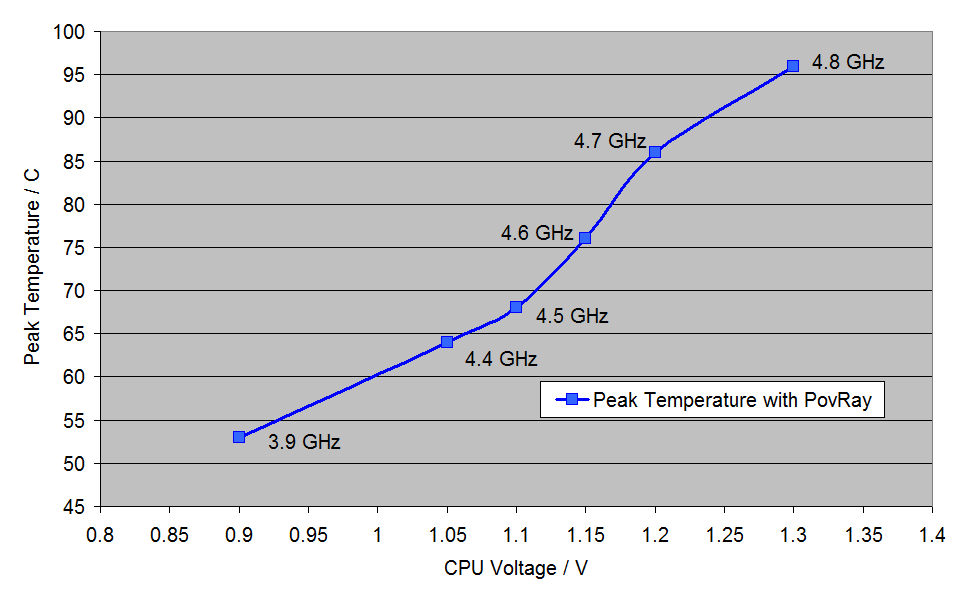IDC and Ferzerp. Found this over at HardOCP.
Quote:
Originally Posted by
ocbaud  a huge problem i'm having after doing this to my 3570k @ 4.5ghz
using noctura paste on the core and the IHS with good water cooling.
After first doing this, i get temps idling around 31c-32c on all cores.
Load temps with intel burn test would show 62c max on any given core.
after a few weeks of this computer running almost 24/7 (not under load, mostly idle)
I get the same idle temps, but load temps hit 90c on a couple cores(i stop IBT before it goes on longer than a couple seconds)
this has happened 3 times now and each time, after i pull the ihs off and replace the thermal paste, the temps come down again.
it makes great contact at first, but given enough time it stops working well.
what could i be doing wrong?
a huge problem i'm having after doing this to my 3570k @ 4.5ghz
using noctura paste on the core and the IHS with good water cooling.
After first doing this, i get temps idling around 31c-32c on all cores.
Load temps with intel burn test would show 62c max on any given core.
after a few weeks of this computer running almost 24/7 (not under load, mostly idle)
I get the same idle temps, but load temps hit 90c on a couple cores(i stop IBT before it goes on longer than a couple seconds)
this has happened 3 times now and each time, after i pull the ihs off and replace the thermal paste, the temps come down again.
it makes great contact at first, but given enough time it stops working well.
what could i be doing wrong?
I don't discount it, I believe it. What I take from this is that NT-H1 is simply incompatible with the thermomechanical environment that exists in direct-die applications.
For example we know the mismatch in
coefficients of thermal expansion will be much larger between that of the silicon Die and the metal IHS versus that which exists between a metal IHS and the metal base of an attached HSF/water-block.
Additionally we know the wettability of the silicon die is markedly different than that of the metal surfaces for which NT-H1 was developed to adhere to. This makes issues of viscosity and surface adhesion a factor when matters of thermomechanical forces are a concern, which they are.
So what does this boil down to in terms of why NT-H1 could be giving rise to these results? Two things can be happening, and possibly in combination.
One is the
push-pull pumping effect that comes with the mechanical expansion and contraction of the silicon, the TIM, and the overhead IHS. Eventually, given time, the TIM itself will be squeezed out of the gap that it occupies between the die and the IHS and an air gap will be left in its place. The air gap most likely forms when the CPU cools down.
Then when the CPU heats back up, the air gap prevents the IHS from heating up in concert with the die and the TIM, resulting in an IHS that is not expanding to fill in the air gap, leaving the CPU much hotter than before.
The second point of concern is that of
emulsion separation - the molecular components that comprise NT-H1 may experience separation at the behest of the silicon die interaction (it will actually be a silicon nitride at the surface). NT-H1 was probably not designed to remain an emulsion when in contact with silicon as it was designed to remain an emulsion when in contact with copper, aluminum, or nickle (more specifically, the metal oxides of those elements).
So a chemical separation may be the culprit as well, and likely it is a combination of both.
If it is just chemical separation then choosing a different TIM will be the solution.
If it is is thermomechanical push-pump that is the culprit then going with the more permanent metal-TIMs (Indigo Xtreme or Liquid Ultra) would be the solution.
In either case, going with the more permanent metal-TIMs would appear to be the one-size-fits-all solution provided the thermomechanical stresses that will then arise from having the mismatch in coefficients thermal expansion do not cause issues for the IB packaging itself (ala bumpgate dejavu).









